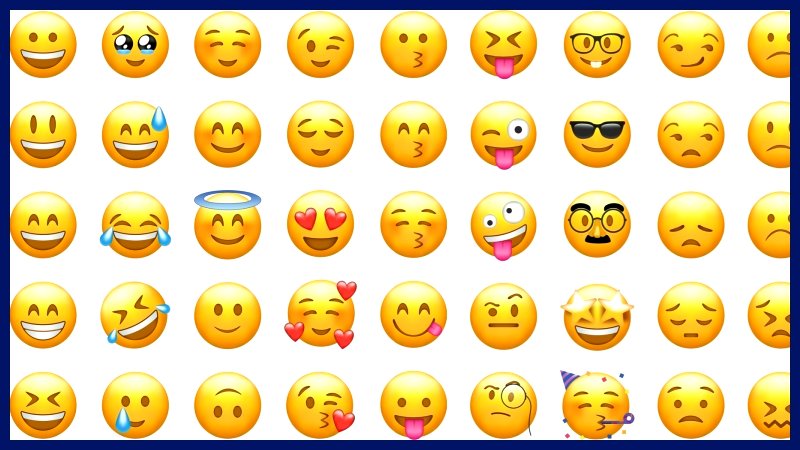
Opinion: How emojis have radically changed communication strategies
share on
This week, we celebrated World Emoji Day. The clue’s been right in front of us the whole time – the day is named as such as it is the date shown on the calendar emoji, and its purpose is to celebrate our favourite language components. But what’s to celebrate? And how are emojis still relevant for Gen Zs today?
Firstly, Gen Zs communicate with them beyond the typical text depictions of one’s mood. There is also a tendency to use them with much more nuance and creativity – it’s almost like a second or third language to us since we grew up using them during the proliferation of social media, enhancing our online conversations.
Don't miss: Opinion: Unleashing the potential of creative commerce in Malaysia
Through social media, Gen Zs radiate new trends and new ways to use different symbols faster, leading to widespread adoption. The meanings of emojis have also evolved – they are not as literal as they seem and are being used ironically. Some examples of how they’re not being used with their intended meaning include:
- To indicate that you’re listening
- Showing laughter
- Showing that you’re going to take the advice shared
- Adding emphasis
- Combining several emojis to evoke a particular meaning
Curious, I ran a small focus group among my Gen Z and Millennial coworkers in Singapore. It became clear that emojis go beyond mere text embellishment – they are an art of expression in their own right. As well as conveying moods, feelings or emotions, additional usages include purposefully sounding less formal, asking for favours, fostering relationships faster, helping respond quickly, and even ending a conversation.
My Gen Z coworkers appreciate niche emojis, such as ‘rolling on the floor laugh’ and ‘sparkles’ over generic options used by everyone like ‘smiling face’ and ‘face with tears of joy’. Even the individual emojis themselves highlighted a distinction – the Gen Z respondents see the ‘pleading face’ as a cute expression, or when someone is touched; millennials interpreted this as someone asking for a favour or feeling sad.
When we speak about evolution, it is not simply limited to usage, but also in app progression too. Recent updates to messaging platforms such as Telegram and WhatsApp now allow users to react to a message with emojis; instead of responding to a message with one in return, responding solely with a reaction is completely acceptable.
How will emojis impact comms strategies?
For our industry, how will this impact comms strategies? It’s critical to keep up with the latest developments – TikTok is a great place to explore and learn about the latest trends and spot emerging new contexts. For internal communications, especially if there are more significant generational gaps within organisations, there should be mindfulness of how emojis are used to prevent misunderstandings, miscommunication or exclusion.
Within external communications, we can look at their use in social media content, such as captions, or even supers in TikTok videos, to keep the copy relevant, on-trend and upbeat, especially when targeting Gen Zs. It also differs between brands depending on brand identities, which determine the vibe they exude, and the tone used. And it’s not just for comms, but in transactions and search too – in Adobe’s latest emoji report, 55% of users globally are more willing to buy an item using one.
Brands on social media should also consider their usage in the markets they’re posting in to ensure that they are used appropriately – don’t just roll out a regional playbook and assume universality.
Aside from generational differences, meanings will differ based on each territory’s trends, memes and localisation. What might be acceptable in one culture may miss the mark or even offend in another. For instance, in Thailand, the colour yellow is associated with Thai royalty. When used in specific contexts regarding politics, a yellow heart signifies allegiance or support to the King in Thailand, and this can be controversial at times given political sensitivities.
And as for what’s next? I don’t see emoji usage diminishing any time soon. In fact, I predict that their meaning will continue to evolve as more trends emerge (for example, a recent emoji trend that emerged: ‘no’, which refers to “not lying”) making it crucial for marketers to be testing them continuously.
With the addition of new icons, contexts and cultural conversations, Gen Zs will continue to use emojis progressively. One thing is for sure – not all will be used at face value!
The article was written by Sabrina Foo, consultant, DeVries Global Singapore.
Related articles:
Opinion: The future of social audio in APAC remains strong
AI & Search: What does the future look like?
How can businesses adapt to changes in social media behaviour caused by health crisis and emergencies?
share on
Free newsletter
Get the daily lowdown on Asia's top marketing stories.
We break down the big and messy topics of the day so you're updated on the most important developments in Asia's marketing development – for free.
subscribe now open in new window
